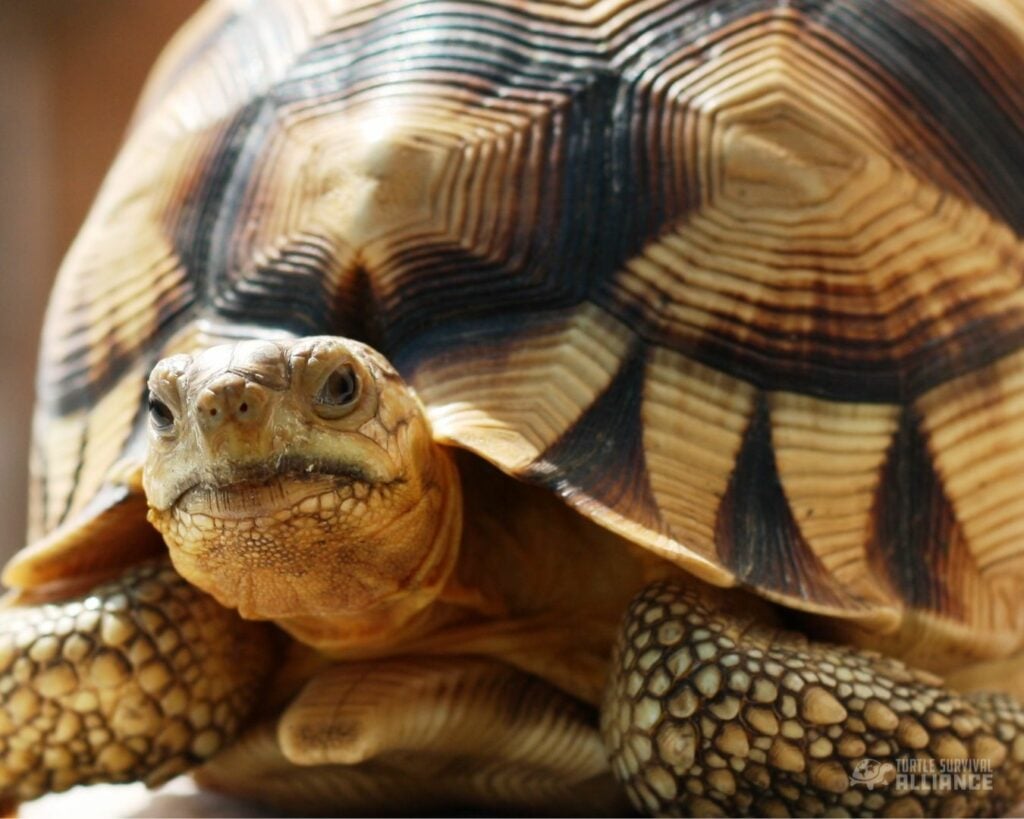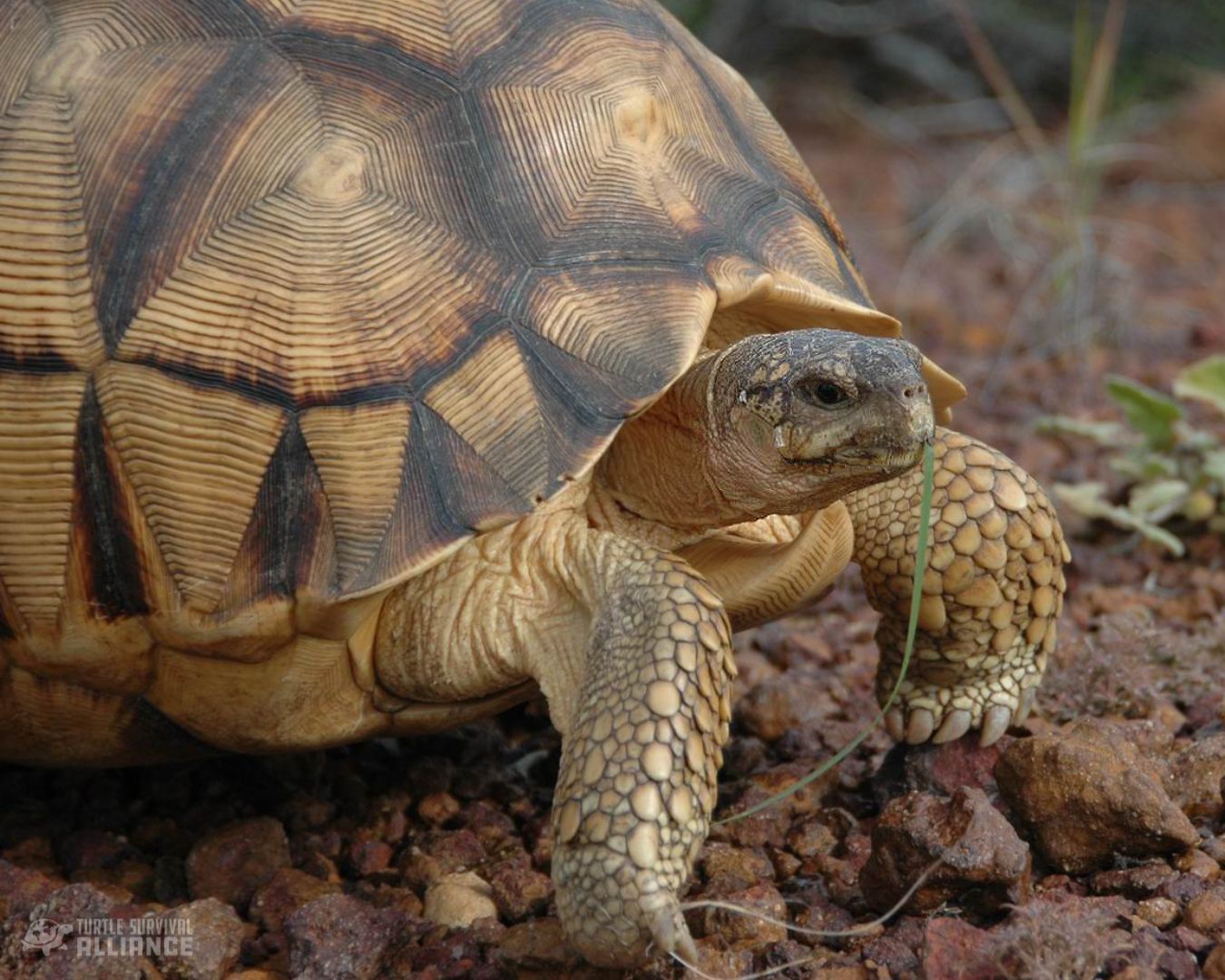The Proud Ploughshare
Known as “angonoka” in its native Madagascar, the Ploughshare is widely recognized as the world’s most endangered tortoise. It is easily recognized by its highly-domed, straw-colored carapace, and exceptionally pronounced gular, or front, scutes on its plastron. Resembling a plough, these gular scutes are what give the Ploughshare Tortoise its name.
The range of the Ploughshare Tortoise is now restricted to the Baly Bay National Park in northwestern Madagascar. The decline of this beautiful tortoise is due primarily to the illegal wildlife trade, driven mainly by demand from Asian countries, where they are highly valued for their “golden” color, unique shell, and rarity. Essentially, the ownership of this illegally traded tortoise is a status symbol. They are at further risk from habitat loss due to fire.

The Ploughshare Tortoises’ survival now depends on assurance colonies and captive breeding programs, from which their offspring will hopefully someday be reintroduced into a safe environment. Our successful captive breeding program in Madagascar, and others like it, along with enforcing habitat protection and guarding against poaching within the National Park, are critical to restoring a wild population.
- Pictured: Ploughshare Tortoise (Astrochelys yniphora)
- Countries of Origin: Madagascar
- Habitat: Dry deciduous forests
- Wild Population: Functionally extinct in the wild with only a few remaining scattered individuals
- IUCN Red List Status: Critically Endangered
- Threats: Poaching from the wild for high-end pet markets, illegal wildlife trade; burning from brush fires
